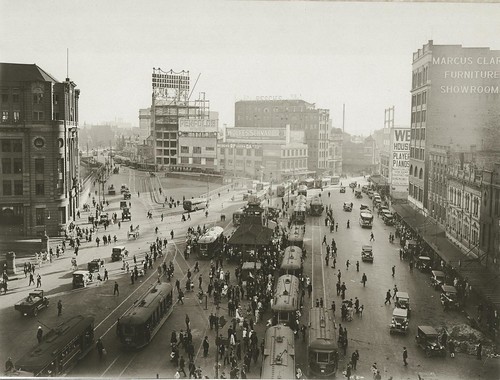by John Black
Transport is intertwined with people’s daily lives and with socio-economic and cultural activities. Considering the interactions amongst all forms of transport, the location of facilities and land use (spatial development), and the fact that a variety of transport systems and technologies co-exist within a limited area where environmental loads are the heaviest, urban transport has become one of the major issues for the lives of citizens and well as for local business. Sustainability and transport is a major issue in Australian cities (with water and energy, see, Australia, House of Representatives, 2005) and in the global cities of the 21st Century. Governments play a major role in shaping visions for the future sustainability of urban societies, and for formulating land use, transport and environmental policies, and the private sector is involved in the delivery of technology, both as producers, and, increasingly owners and operators of infrastructure.
Technologies (and associated techniques) can be studied in terms of form, function and their political, economic and social context. Urban transport – the infrastructure that supports the movement of people and goods – is an example of a technological system and the first section of this paper explores this link between technology and culture. The context for this exploration into contemporary research issues on sustainable urban transport is provided in the following section with a brief history of transport planning and policy.
The great societal challenge now is how to create sustainable urban environments to improve the collective human experience. In Australia, ecologically sustainable development (ESD) with the inter-governmental agreement is one of the current external drivers to urban transport planning and policy. This paper then explores research issues that are relevant to metropolitan regions in Australia, such as an appropriate definition for “sustainability”, performance indicators, and their spatial scales. It also provides a specific case study of sustainable urban transport policies and technologies in urban Japan. This is based on interviews with government officials conducted by the author and his colleagues at Nagoya University. Drawing again on the Japanese experience, and on comparative data from other international cities, the relative roles of public transport technology and road technology are explored, and implications for policy are outlined. Finally, and given the importance placed on practical experience and policies from other global cities, a research challenge is finding mechanisms to facilitate international collaboration in sustainable transport and cities. One such research collaboration involving Nagoya University and Tongji University, The People’s Republic of China, is outlined. One of its internationally competitively awarded research projects – into the dynamics of polycentric employment formation, and associated land-use and transport policies – is briefly described. Finally, the conclusions summarise the main points of a research agenda for sustainable transport and cities with particular reference to Sydney.
Technologies (and associated techniques) can be studied in terms of form, function and their political, economic and social context. Urban transport – the infrastructure that supports the movement of people and goods – is an example of a technological system and the first section of this paper explores this link between technology and culture. The context for this exploration into contemporary research issues on sustainable urban transport is provided in the following section with a brief history of transport planning and policy.
 |
Trams and traffic at Railway Square, Sydney, 1927 |
more about sustainable tranportation:
No comments:
Post a Comment